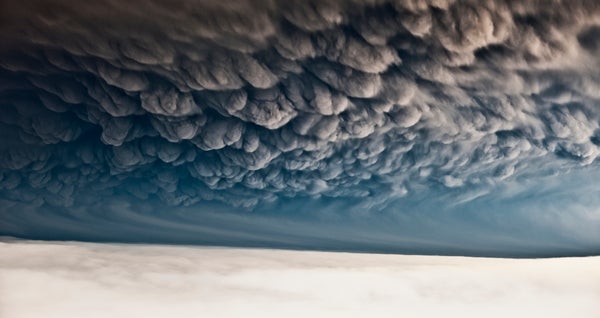Researchers rely on the rumble of magma moving underground to predict impending volcanic eruptions. But standard seismic tools provide only a rough picture of what's happening beneath Iceland's ice-covered volcanoes. ETH Zurich seismologist Andreas Fichtner and his colleagues recently showed how the same ice sheets that hide these volcanoes can amplify otherwise undetectable seismic signals.
Iceland's most active volcano, Grímsvötn, is entirely covered by Europe's largest glacier. In recent history it has erupted explosively about once per decade, generating flood hazards and dangerous ash clouds. To study Grimsvötn's activity and structure, Fichtner and his colleagues deployed a 12.5-kilometer-long fiber-optic cable that took continuous, real-time measurements of ground vibrations on and around the volcano in May 2021. By tracking how pulses of light travel through the cable, researchers charted ground vibrations at every point along the way.
Upon analysis, the researchers found they had detected nearly 2,000 earthquakes in less than one month—compared with 18 recorded by Iceland's national seismic network, according to study co-author Kristín Jónsdóttir of the Icelandic Meteorological Office. And they also logged a strange, rhythmic vibration from the ice floating atop a lake in the volcano's large central depression, known as the caldera.
On supporting science journalism
If you're enjoying this article, consider supporting our award-winning journalism by subscribing. By purchasing a subscription you are helping to ensure the future of impactful stories about the discoveries and ideas shaping our world today.
An ice sheet, like any solid, inherently vibrates at some natural frequency. If it is subjected to another, bigger jolt that matches that frequency, the vibration will be amplified—like a jackhammer outside causes a kitchen tabletop to rattle. The researchers propose that their mystery hum comes from tiny earthquakes, called volcanic tremors, caused by volcanic and geothermal activity. These tremors are most noticeable near the volcano's caldera, and they can indicate the likelihood of eruption.
“The ice sheet's natural resonance acts as a magnifying glass,” Fichtner says—boosting the otherwise unobservable tremors to a detectable level. “To the best of our knowledge, this is a phenomenon that has not been observed before.” The work was published in The Seismic Record.
This amplifying effect also arises in a very different locale, says Ebru Bozdag, a geophysicist at the Colorado School of Mines, who was not involved in the study. In places such as Los Angeles, she says, “we know that sedimentary basins have the potential to amplify seismic waves, which is what makes them so hazardous. My understanding is that the ice sheet in the volcano might be behaving somewhat similarly.”
Tracking geothermal activity, which these natural resonators can reveal, is “critical for knowing what your volcano is doing,” says Corentin Caudron, a seismology researcher at the Free University of Brussels, who was not involved in the work. “The study opens great perspective for monitoring glacier-covered volcanoes in Iceland and elsewhere.”
